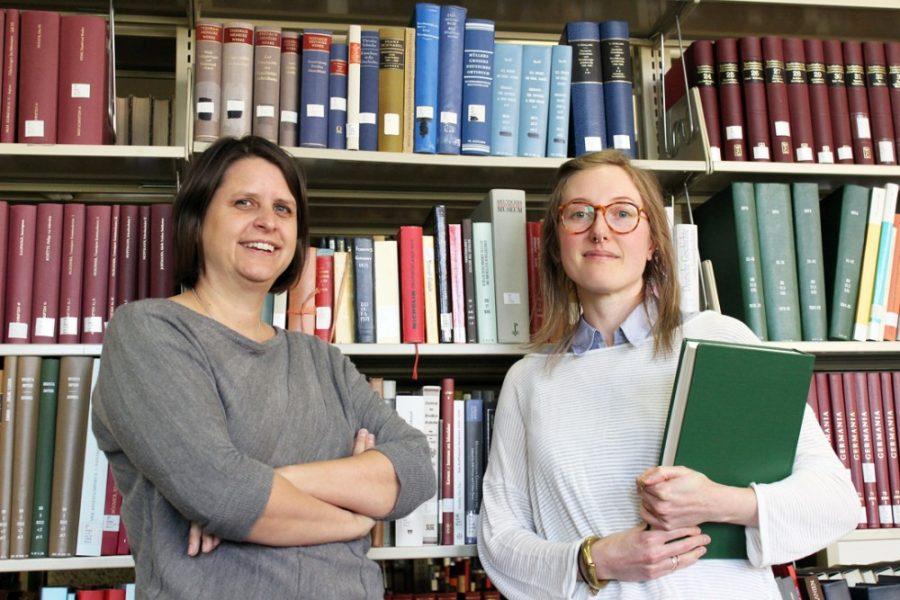UA librarians Cindy Elliott and Nicole Pagowsky are not the stereotypical librarians portrayed in movies and TV shows: old, cranky, white women with a constant need for total silence.
Today at 6 p.m. at the Playground Bar & Lounge, Elliott and Pagowsky will give an interactive talk called “Shushing the Librarian Stereotype.” As part of the Confluencenter’s Show & Tell multimedia learning experience, the talk is about librarian stereotypes and the effects they have on student learning.
“Show & Tell is a great opportunity to learn about what UA faculty are doing and their research,” said Jamie Manser, communications and events coordinator at Confluencenter. “This particular event is a great opportunity to look at how we examine ourselves, stereotype things and the way we put people into categories. The relaxed environment usually provides for a fun multimedia experience.”
Elliott said they have prepared an interactive presentation with video clips, games and prizes in which they will engage the audience and get them to talk about how librarians are depicted and what associations we make with them.
“We believe the librarian stereotypes do affect student success,” Pagowsky said.
She explained that students often have anxiety about using such a big library with a large collection. This, coupled with the stereotype of librarians being angry, mean and unhelpful, is detrimental to students.
“We want to show these stereotypes to students and let them know that we can and want to be very helpful and that we want them to succeed,” Pagowsky said. “Being aware of them and [realizing that the stereotypes about librarians] aren’t true can improve how well students do at UA.”
Pagowsky said a lot of her research the last few years focused on library stereotypes and how women are represented in the field, especially significant since 80 percent of librarians are women.
Elliott is particularly interested in how and why these stereotypes have managed to persist over time. She added a lot of this has to do with depictions in movies and books.
Manser said she recently watched Ghostbusters. Both librarians portrayed were elderly white women, which is the common assumption.
Manser said she encourages the audience to look at librarians through a different lens in order to realize how much work they really do. Her concerns are about how these misconstrued labels are damaging the profession, because some may feel like they don’t fit the idea of a “typical librarian.”
“I think it’s a really great way to reflect on how we categorize people, which, oftentimes, may be really unfair,” said Manser, who added that she hopes people’s views shift.
It is important to recognize and understand how librarians are not only diverse but how the work they do is extremely valuable; having people to guide and connect you to information is essential, Manser said.
_______________
Follow Chastity Laskey on Twitter.









